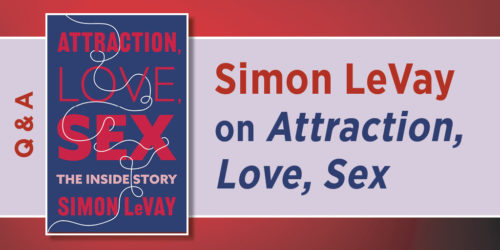Rossano: Fear of Death, Joy of Life and the Origins of God
This week our featured book is Mortal Rituals: What the Story of the Andes Survivors Tells Us About Human Evolution, by Matt J. Rossano. (And don’t forget to enter our book giveaway for a chance to win a FREE copy of the book!)
In a November 2010 Huffington Post blog, Rossano writes on the interesting themes of death, life and God with the ideas of fear and happiness intersecting into those themes.
He begins by describing two images. “Two juxtaposed images of religion: A priest in ancient Egypt moaning out an elaborately ritualized incantation over the mummified body of a dead pharaoh, and Tevye and his friends from Fiddler on the Roof drunkenly dancing and shouting l’chaim(“to life”).” Rossano states that these images demonstrate that human mortality and the fear of death serve as sound origins for religious figures and holy texts to appease our expectation of life after death.
Rossano then proceeds to discuss the paradox that while religion may appease the fear of death, it also heightens it. “For example, Ah Puch, the Mayan god of the dead, was a gruesome character whose putrid, decomposing, skeletal form offered little in the way consolation to new arrivals. The ancient Greeks had a similarly disheartening view of the afterlife. In book XI of The Odyssey, the dead Achilles laments to Odysseus: Say not a word in death’s favor; I would rather be a paid servant in a poor man’s house … than king of kings among the dead.”
Next, Rossano delves into the history of religion and the notion that religion considers living a holy life just as important, if not more, than living in bliss in heaven after death. “In his book Walking the Bible, Bruce Feiler expresses surprise at how little attention the Pentateuch pays to death (p. 385). Early Judaism, he concludes, was far more concerned with living a holy life than achieving a blessed afterlife. Likewise, religion scholar Mircea Eliade argues that in traditional religions, life — not death — was the central mystery demanding explanation.”
Also in his blog post, Rossano discusses the ritual aspect of religion and the healing power of ritualized activities of dancing, chanting and singing. He cites two studies that showed the effectiveness of such activities and discovered that activities with a spiritual element were more effective on the mind and body than those that were purely non-spiritual in nature. “In one study, volunteers were randomly assigned to one of three groups practicing different meditative/relaxation techniques: a group that used a spiritual mantra such as “God is love” or “God is peace,” a secular group using a phrase such as “I am happy” or “I am joyful,” and a control group that was simply given relaxation training. After practicing their technique for 20 minutes a day for two weeks, subjects were tested on measures of anxiety, mood and pain tolerance measured by the amount of time they could keep their hands in water of two degrees Celsius. Those practicing spiritual meditation were able to keep their hands in the near-freezing water twice as long on average as the other groups. Additionally, the spiritual group showed greater anxiety reduction and mood elevation.”
Rossano makes the excellent point that the supernatural element strengthens the efficacy of rituals in religions, so much so that religions and their followers withstand the test of time. The healing power of these rituals that dealt with awakening one’s consciousness is not a new concept as “our ancestors were singing, dancing and chanting together long before anyone conceived of the supernatural. By including the supernatural, community rituals that had incidental health and healing effects became shamanistic rituals of individual and community healing. The effects of these healing rituals were quite real: anxiety levels were reduced, immune systems were strengthened, pain tolerance was increased, social bonds were reinforced, participants’ mental and emotional states were elevated. In short, life was made better.”
He finally concludes by stating that the reason “institutionalized religions survive the corruption, hypocrisy and other self-destructive tendencies that too often have been a part of their history” is because religious rituals and the community building as a result of those ritualized activities make the followers feel good, both on the emotional and physical planes. “They keep coming back because it feels good, and in a very real and empirically demonstrable way it is good.”



2 Responses